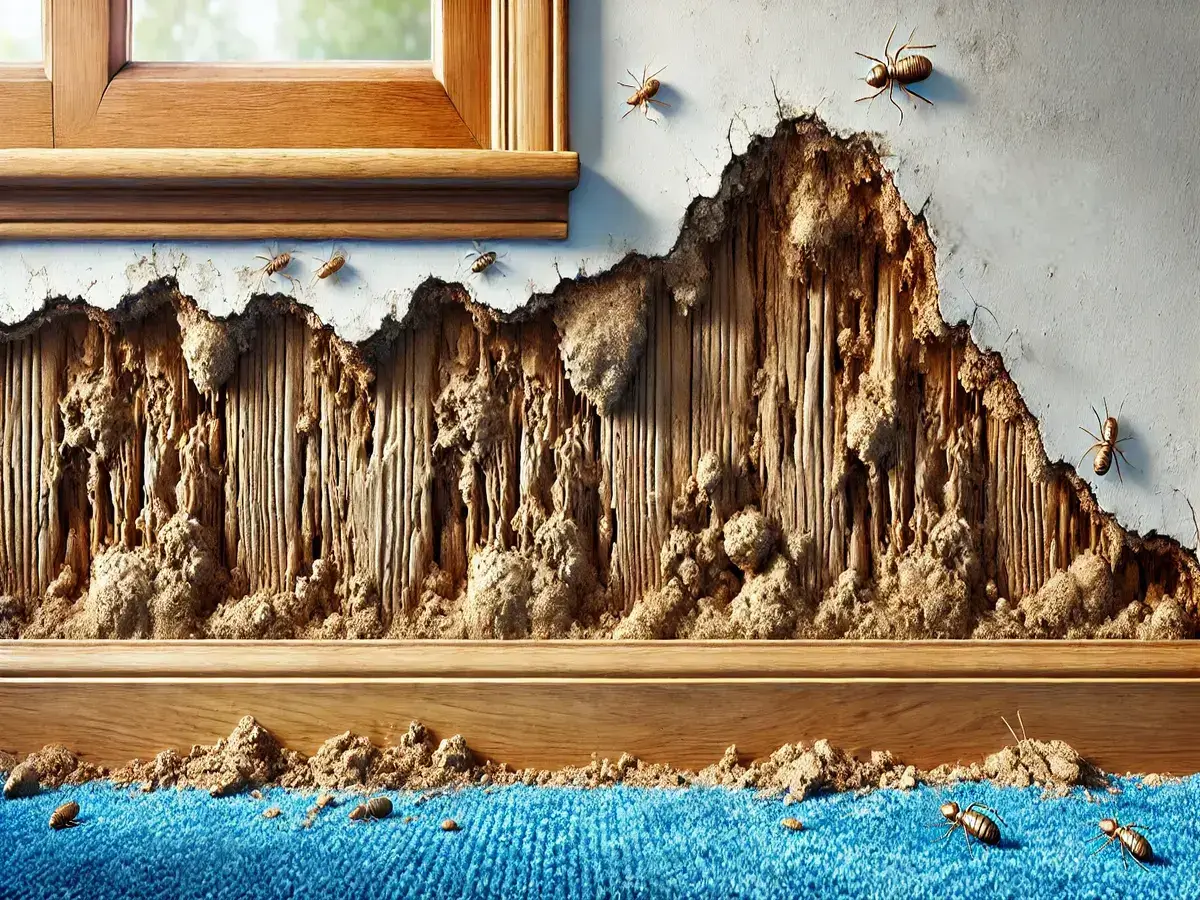Termite Infestation: How Regular Inspections Can Save Your Home

Imagine waking up one day to discover that your perfect home is not so perfect after all; some intruders were slowly damaging it. Termites, often called “silent destroyers,” can wreak havoc on a property’s structural integrity, causing extensive damage before any signs appear. Did you know that these termites can cause over $5 billion in damage to homes in the U.S. every year? Most of the time, the homeowners don’t even realize that such a threat is lurking beneath their walls. You don’t want to go through something similar, so scheduling regular termite inspections is better. This won’t be just for precaution but to preserve your property’s value and beauty.
In this blog, we will discuss how proactive these inspections are in safeguarding your home and how to prevent termite infestation even after the inspections.
What Are Termite Inspections?
Termite inspections are the best way to search for termites that can majorly damage your house. It is estimated by The National Pest Management Association that, on average, 600,000 homes are at risk of damage by termites every year. Considering the severity of the issue, the trained professionals conduct termite inspections thoroughly, checking the interior and exterior of the property. This includes the crawl spaces, basements, attics, and other areas with a high chance of termite activity. The inspectors look for signs of termite activity, such as:
- Mud tubes
- Damaged wood
- Droppings
If you’re considering delaying the inspection, remember that getting these pests checked regularly is very important, as termites can cause significant structural damage if left untreated. FYI, nearly one quarter (22%) of homeowners had experienced structural damage to their homes from a pest problem, with termites being the greatest pest concern for one in four homeowners.
What Happens During Termite Inspections?
During a termite inspection, a trained inspector examines different parts of the property to look for signs of termite activity or damage. Below is a breakdown of what typically goes on during an inspection.
Exterior Inspection
The inspector starts off by inspecting the exterior of your property. This mainly includes checking the following:
- Foundation
- Walls
- Door frames
- Decks
- Fences
- Sheds
When inspecting the exterior, inspectors look for mud tubes, small tunnels that termites use to travel between their nests and food sources. They also look for damaged or hollow-sounding wood that might indicate termite feeding. The excess moisture around the foundation also helps inspectors look for termites. Wherever there’s excess moisture, they know that the intruders are near. Additionally, the inspector examines areas where wood meets the soil, as these spots are particularly vulnerable to termite infestation.
Interior Inspection
Once the exterior inspection is done, the inspector moves to the interior part of the property. Here, mainly the inspector checks the basements, crawl spaces, attics, and areas around plumbing pipes. The main focus will be on the dark, moist environments as termites often thrive there. When inspecting, inspectors look for signs of termite activity, such as:
- Frass (termite droppings)
- Discarded wings
- Damaged or hollow-sounding wood
When inspecting, the inspector may also use tools like moisture meters to detect moisture areas and flashlights to peer into dark corners and crevices. Following this, the inspector inspects the wooden beams, flooring, and walls for signs of termite presence. Once the interior inspection is done, the inspector can identify active infestation and assess the extent of damage.
Report Findings
This is the final and critical step in a termite inspection. The inspector compiles whatever they have observed and their findings into a comprehensive report. The documents detail any evidence of termite activity, such as damaged wood, mud tubes, and areas of the property that are at high risk of future infestation due to moisture. The report includes photographs of affected areas, notes on the extent of any damage, and specific locations where termites were detected. Additionally, the report provides recommendations for treatment to eliminate the termites and preventive measures to protect the property from future infestations. This detailed account is essential for the property as it informs about the property’s condition and the necessary steps to maintain its structural integrity and value.
How to Prevent Termite Infestation: The Recommended Measures
Reduced Moisture
Moisture majorly attracts termites, so it’s better not to leave any chance of moisture in your house. Well, at least fix the issues that you can. If your roof, pipes, and gutters are leaking, then it is better to handle the issue right then. Also, ensure proper drainage around the foundation and use dehumidifiers in basements and crawl spaces. All of this can help reduce moisture in your house and thus control termite infestation.
Proper Ventilation
To smartly prevent termites, you also need to ensure proper ventilation as it helps maintain a dry and less hospitable environment for these pests. Termites thrive in humid conditions, so ensuring good air flow in attics, basements, and crawl spaces is important. Now, how can you do that? By installing vets, fans, and dehumidifiers. Remember, proper ventilation not only deters termites but also prevents mold and mildew growth, which, in turn, protects the structural integrity of your property. You must also regularly check and maintain ventilation systems to ensure they function effectively and help keep the indoor environment dry.
Eliminate Wood-to-Soil Contact
When you eliminate wood-to-soil contact, you eliminate the chances for termites to have easy access to their primary food source: wood. For this, you may ensure that wooden structures, such as decks, fences, and the wooden parts of the house foundation, are elevated above the ground using metal or concrete supports. Any wooden components, including siding or door frames, should not touch the soil directly. Besides, it’s important to maintain a gap between soil and any wooden elements of the property, using barriers like gravel or concrete to keep them separated. This will not only prevent termites from accessing the wood but also reduce moisture around the foundation.
Conclusion
If you want to ensure the structural integrity of your house, you must not skip regular termite inspections. It is better to schedule these inspections during the summer and spring months, as this is when the termites are most active and easier to detect. During these warmer seasons, termites swarm to establish new colonies, making it more likely to spot signs of their presence. Scheduling inspections during this period allows inspectors to identify infestations early before termites can cause significant damage.
However, if you reside in an area with a mild climate, there is a high chance of termites being active all year round. So, it is better to schedule these inspections biannually, i.e., in spring and fall. Regular inspections are essential in maintaining a termite-free property, as they enable timely detection and treatment, ultimately protecting the structural integrity and value of the home.
Ensure your property remains safe and pest-free with Elite Commercial Inspections! Our expert team offers comprehensive pest control services to protect your business from damaging infestations. We’ve got you covered from thorough termite inspections to effective treatments and preventive measures. Don’t wait for pests to cause costly damage – schedule your inspection today and experience peace of mind with Elite Commercial Inspections.




